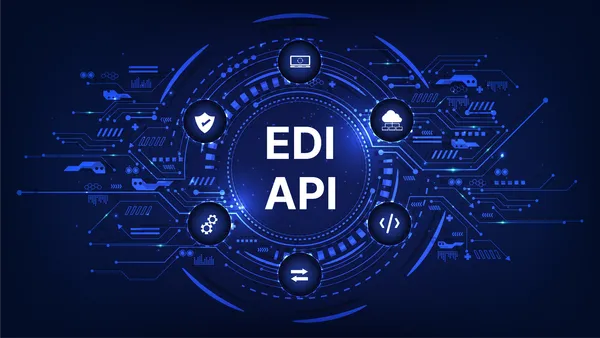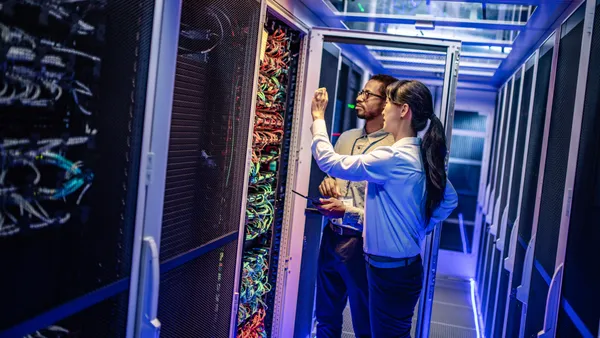For a CIO, managing today's — and even yesterday's — IT is a complex field to maneuver.
Atop those demands sits the ever-present threat of technology disruption, the forces of innovation that will disrupt their business in the coming years or possibly render it obsolete farther down the line.
Emerging technologies fill the hearts and minds of technology's talented innovators with inspiration, hope and daring. They turn sci-fi dreams into reality and challenged accepted technology and computing paradigms.
Before enterprise dreams become reality, businesses must to invest in the infrastructure and talent that will lay groundwork for future investments.
Artificial intelligence-based and enabled technologies will heavily play into the next wave of enterprise computing capabilities, but innovators have to navigate and manage accountability, market support and hype.
-
Future tech depends on the supporting business networks
CIOs will push for emerging technologies and a customer-focused operating model, but they will also be held accountable for innovation that delivers. That means there won't be endless experimentation, according to Forrester Research's CIO Predictions. A moonshot in 2019 is likely to destroy at least one company and serve as a cautionary tale for the rest.
Before layering on advanced capabilities, CIOs and other technology leaders have to make sure the business' foundation is strong.
Key to getting innovations like AI and blockchain off the ground will be the support of infrastructure innovations and investments made in the last several years, according to Michael Warrilow, VP analyst at Gartner, in an interview with CIO Dive.
In the past, businesswide network fabrics had fixed topology, but in recent years advancements have made it possible to build a software layer on top of hardware that can flexibly change how parts of the network interact, according to Warrilow. Software-defined networking allows businesses to run different workload needs and adjust for large swings in demand, setting the foundation for advanced technology capabilities.
In 2019, limitations of networks will start to affect how businesses grow and innovate. Network configuration — how a business designs its network — will be fundamental for and defining of business strategy, he said. CIOs have to understand what their network can do and bring that to the strategy table.
Business networks empowered a lot of the disruption in the last decade, and growing the size of networks and making them competitive will also drive value in 2019 and beyond. But the flexible network is the essential foundation.
-
Markets supporting nascent technologies will increase competition
China is the greatest technology competitor to the U.S., but other countries are also getting in on the competition. New technology hubs in Japan, Israel, Singapore, Canada and the European Union are vying for influence.
As foreign countries focus on helping businesses scale and implement advanced technologies, it will add a new dimension of competition for U.S. firms, according to Daniel Castro, vice president of the Information Technology and Innovation Foundation, in an interview with CIO Dive. It's no longer just about what a business can do on its own, but whether it is situated in an economy and location where the government is supporting its activities.
When the U.S. put restrictions on drone technology, many companies moved to Canada and Germany instead. A similar dispersion could occur in fields such as AI and the internet of things depending on policies enacted by the government, according to Castro.
Right now, the American government is investing in universities and research, and organizations generally more willing to take risks on technology are driving innovation. But many experts and businesses feel the U.S. doesn't have enough supportive policies for emerging technologies.
China's 2025 roadmap, which leverages the power of the state to support the companies advanced tech industries, has rattled many American policymakers and technology companies. Calls for R&D support, open data policies and concerted national efforts in the U.S. have been levied at Congress by artificial intelligence experts.
With no federal policy in place, state policies can jump in and be highly effective to help build hubs around technologies. Tax incentives, grants for researchers and quality of living improvements can all impact American tech hubs and subsequently innovation, Castro said.
-
AI-supported everything
AI and machine learning will be at the core of many innovation agendas.
The Gartner 2018 Hype Cycle for emerging tech was replete with AI-enabled or -backed technologies, demonstrating the deep foundation the technology will offer for the enterprise — even if much of it is still years from realization.
Simplified tools, cloud-based solutions and low code options are making AI more accessible to developers as well as other business members.
As AI enters the age of commodity, most applications will be built by people with minimal or no training in AI in the coming years, according to Ketan Karkhanis, SVP and GM of Analytics Cloud at Salesforce, in a statement provided to CIO Dive.
There may not be a watershed moment in the coming years, but daily life will become more efficient in significant, if hard to notice, ways, according to Karkhanis. From bots and smart assistants to self driving cars, AI will steadily seep into more areas of life.
-
With great power comes great responsibility
As the government grapples with its role in emerging, disruptive technologies — including AI, blockchain and quantum computing — understanding how to balance the merits and negative consequences of these technologies will continue to dominate public discussion.
If last year was the year for awakening, 2019 will be a year of action for the responsible use of AI, according to Karkhanis. Data ethicists, human rights advocates and consumers will demand transparency, accountability and fairness after having felt many of the negative effects of personal data misuse by corporations.
In 2018, businesses had to manage internal turmoil as employees protested and took a stand for ethical use of data and technology, from AI applications to immigration-related policies.
In 2019, more employees will seek influence about what they create and what it is used for, refusing to participate in the contribution of harmful automation, according to Karkhanis. Companies will need to be conscious of what AI solution they buy or build and ensure they won't be the next big, bad headline.
Many businesses are already rolling out tools to help deal with bias and black boxes in AI, though more effective countermeasures are still needed. At the root of this problem, data will continue to serve as a thorn in the sides of many organizations working on AI and ML capabilities, as pressures for transparency and accountability rise above demands for accuracy.
Data quality will also serve as the biggest challenge for adopters, the "Debbie Downer" of AI projects, according to Forrester Research. Continued investment in information architecture will have to continue heavily this year.
-
The fan favorites remain far off
Continued experimentation in advanced technologies such as blockchain, machine learning and quantum computing will continue in 2019 as businesses pursue ways to build things better, more efficiently and more securely than before, according to Castro.
In 2018, blockchain saw some major inroads, especially in supply chain systems. Going forward, the technology is expected to see continued innovation and progress — as well as a name change to the more inclusive and neutral "distributed ledger technology" (DLT), according to Forrester.
Distinguished terminology will help set apart distributed ledgers, which are more administered and centralized, from pure play blockchain networks, according to CB Insights Arieh Levi, senior intelligence analyst at CB Insights, during a November webinar.
Tech consultancies, such as IBM, will continue to act as the middlemen enabling DLT, but they will have to combat slowing hype among corporations in regards to blockchain, Levi said. Mentions of "blockchain" in earnings calls have been declining.
As more promising use cases abound, industry is still waiting for the "Netscape moment" in terms of corporate adoption, he said. But public blockchains won't be the best solution for many corporate problems.
Quantum computing will cause one of the greatest disruptions to traditional computing paradigms, though it is farther out from realization that DLT and blockchain. Worries about how the technology will disrupt technology, security and economies will remain high in 2019.
A bill to foster collaboration between academia, industry and government was passed by the House in September and is awaiting action in the Senate. But it is just a first step, and the U.S. is up against heavy investment by foreign nations, especially China.











